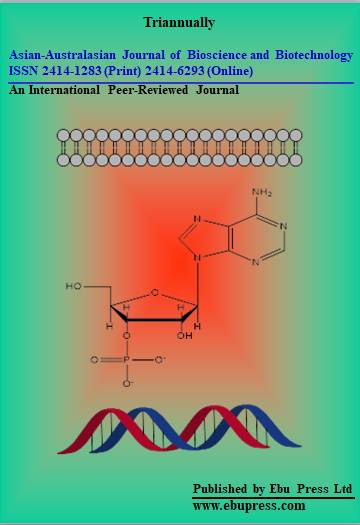Self-Archiving Policy
AAJBB’s self-archiving policy is aimed at promoting open access to scientific research and encouraging the dissemination of knowledge. It allows researchers to share their findings more widely and ensures that the work is not locked behind paywalls or restricted access.
The self-archiving policy of AAJBB allows authors to self-archive their research works at any stage of the publication process, including pre-submitted manuscripts, submitted manuscripts, manuscripts under review, accepted manuscripts, and published articles. This policy empowers authors to store their own scholarly work in their respective institutional repositories or non-profit subject-based preprint servers. It is important to note that this self-archiving privilege is extended to authors for non-commercial purposes, in line with our commitment to fostering open access and the wider dissemination of scientific knowledge.
Pre-submitted manuscript
Authors are strongly encouraged to share their pre-submission manuscript on preprint servers or repositories prior to submitting it to AAJBB. This proactive step enables authors to engage with researchers and experts in their specific field, even before the completion of the publication process in AAJBB. This early dissemination can potentially lead to increased citations for the author’s work.
A note in the cover letter during submission should include details about the pre-submitted manuscript, such as the name of the repository where it is deposited and the corresponding DOI number. This information ensures transparency and allows for easy accessibility to the pre-submitted work.
It is the responsibility of the author to communicate with the assigned editor regarding any voluntary comments received from subject experts in the deposited repositories. While AAJBB adheres to its own editorial and review policy, the journal also values and respects rigorous comments provided by subject experts on the deposited manuscript. The ultimate decision on whether to incorporate these voluntary comments into the final review and revision process lies with the assigned editor.
Submitted manuscript
Authors are permitted to archive their manuscripts after submitting them to the journal but prior to the initiation of the peer review process. To ensure transparency and proper documentation, authors are required to send an email to the journal’s editorial office. This email should include details about the repository where the manuscript is archived, along with the corresponding DOI number.
Under review state
Authors are granted permission to archive their manuscripts even while the material is undergoing review by the journal’s editors and reviewers. To uphold transparency and maintain accurate documentation, authors must send an email to the journal’s editorial office. This email should contain pertinent information regarding the repository in which the manuscript is archived, in addition to the associated DOI number.
Accepted manuscripts
After the journal has accepted the manuscript for publication, authors have the liberty to archive the accepted version, typically the final version authored by the author before any formatting or copyediting by the journal. In line with the commitment to transparency and accurate documentation, authors are required to send an email to the journal’s editorial office. This email should include essential details regarding the repository where the manuscript is archived, along with the corresponding DOI number.
Published articles
After the article has been formally published in the journal, authors retain the privilege to archive it. At this juncture, it is crucial to update the DOI associated with the pre-print to the one provided by the journal for the published version. Authors are actively encouraged to disseminate and share the published article through various means, including but not limited to social media platforms (such as Facebook, X.com, LinkedIn), research platforms (like ResearchGate, Academia.edu, SlideShare, Figshare, PublicationsList.org), institutional repositories (on the university website or research platforms), personal websites, and blogs. This approach supports wider dissemination and access to the published research.



